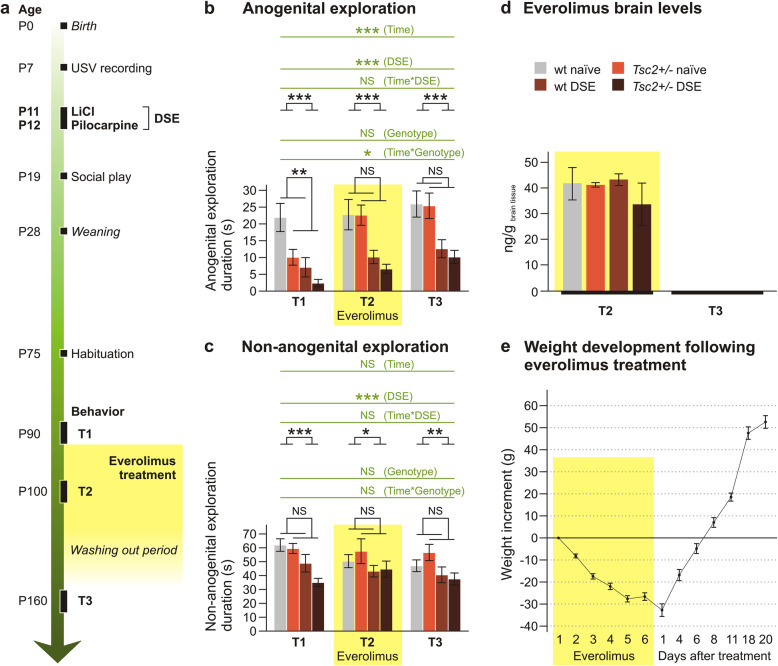Fig. 2.
Effects of everolimus on social behavior in adult rats with Tsc2+/- and DSE. a Temporal order of behavioral tests and drug administration. b, c Duration of anogenital and non-anogenital social exploration before (T1), during (T2) and 8 weeks after (T3) everolimus administration (n = 10 for wt naïve, n = 7 for Tsc2+/- naïve, n = 11 for wt DSE, n = 8 for Tsc2+/- DSE). Anogenital exploration (b) was significantly reduced by DSE, and this effect was not changed by everolimus treatment. Tsc2+/- induced significant decrease in the baseline session (T1), which was ameliorated by everolimus medication (T2), and the improvement persisted even after washing-out of the drug (T3). Non-anogenital social exploration (c) was significantly impaired by DSE, but not by genotype. The changes induced by an early DSE experience in both types of social behavior were not affected by everolimus. d Concentration of everolimus in the brain after T2 testing was not affected by DSE or genotype. No everolimus was detectable at T3, 8 weeks after the last injection (at T2, n = 4 for wt naïve, n = 4 for Tsc2+/- naïve, n = 6 for wt DSE, n = 2 for Tsc2+/- DSE, at T3, n = 10 for wt naïve, n = 7 for Tsc2+/- naïve, n = 11 for wt DSE, n = 8 for Tsc2+/- DSE). e Two-week administration of everolimus led to marked weight loss in the experimental animals (n = 36). Data are shown as means ± SEM, significances are indicated by asterisks according to three-way ANOVA with repeated measures (in green) and two-way ANOVA (in black). NS p > 0.05; * p < 0.05; ** p < 0.01; *** p < 0.001

